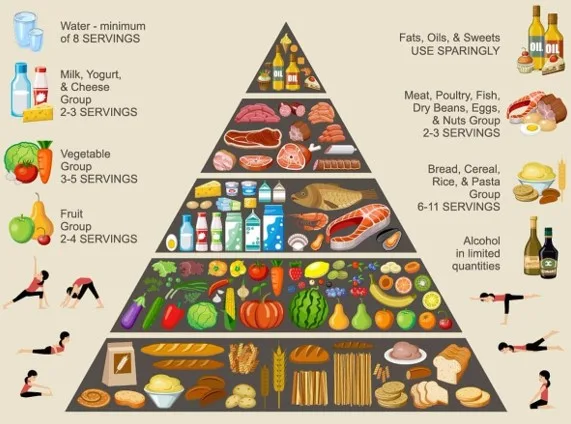Living a full life with diabetes is all about self-control and self-care: Part 4, conclusion
Author’s note: This is the third of a three-part series about diabetes. Part 1 offered a basic overview of the disease and its different types. Part 2 discussed ways to control it with pills, diet and exercise. Part 3 explored new ideas about ways to control diabetes.
By Garnett Stewart
This topic has been difficult to explain without utilizing my vocabulary of medical terminology. Diabetes is a multi-organ disease that is persistent and difficult to reverse from the first pre-diabetic stage. You will only have a brief window of time to  change this dangerous trend before it becomes chronic. I’ve never encountered someone who has reversed full-blown Type 2 diabetes, but I have met folks who maintain control only with food and exercise. These people are of average height and weight, and they are health-conscious.
change this dangerous trend before it becomes chronic. I’ve never encountered someone who has reversed full-blown Type 2 diabetes, but I have met folks who maintain control only with food and exercise. These people are of average height and weight, and they are health-conscious.
Diabetes is a BIG business: diagnosis to death there are high medication prices to extreme diet requirements and exercise requirements. The end is often pricey with lengthy hospitalizations from deadly events including stroke and heart attack.
Every day, a new diet plan is extolled and a new natural remedy is taught on some type of information media for $69-$300 apiece. The fresh banana weight loss treatment that we see on Facebook every day actually costs less than $40 to pay the writer’s expenses. BUNK! If the diet plan was for the readers’ benefit, it might include a little administration fee, but not $40. Please don’t be a dupe and fall for these fast fixes and fad diets. They are typically worthless and mainly benefit the sellers. Many research-based authors provide reliable information. If there are advertisements alongside or adjacent to the articles, enjoy the read but be wary. Often, little truth is revealed.
 The human body is built as a self-serving mechanism that will die at the age of 50. Nonetheless, thanks to numerous modern medical advances, we have increased life expectancy to the mid 70s or early 80s, depending on whose research we believe. Type 2 diabetics typically survive to the average age of 72. They usually die from diabetes-related illnesses rather than diabetes itself.
The human body is built as a self-serving mechanism that will die at the age of 50. Nonetheless, thanks to numerous modern medical advances, we have increased life expectancy to the mid 70s or early 80s, depending on whose research we believe. Type 2 diabetics typically survive to the average age of 72. They usually die from diabetes-related illnesses rather than diabetes itself.
My grandmother was born in the nineteenth century and lived to the age of 104. This longevity demonstrates the significance of genetics in your longevity. She too was a cancer survivor for almost 55 years and actually died from a second primary cancer. I believe that I will follow her path of longevity.
We are the result of two parents and a minuscule portion of their genetic makeup. I imagine an egg and a sperm joining forces to build our magnificent design with endless variables for each of us. Natural selection is responsible for the loss of so many pregnancies; they must be eliminated due to poor combinations and imperfect unions. People grieve miscarriages deeply but actually in almost every case the unfit union is just being eliminated.
Our bodies are built to keep us alive. Here’s an example: when we faint and fall to the ground hard, the amount of energy we receive from striking the floor is almost the same as the amount of energy you receive from one set of electricity paddles to convert your heart rhythm to normal sinus. To put it another way, if we experience a heart attack and develop deadly ventricular tachycardia, we can self-convert to a normal rhythm by slapping on the floor. Many so-called fainters have experienced sudden death, but they have survived. We are meant to restart. That is just miraculous! However, many fainters ignore or refuse medical attention. This is a terrible option because the warning sign might be used to avoid the approaching calamity. For more, click here.
 The human body was created to live. We are resilient and strong in ways that many people find marvelous, but I think of this differently: it is the inherent life force created to persist. We are survivors. I read years ago that we nearly choke to death 8 times during our lifetimes but only die once. Now the real challenge: Thriving. We must correctly feed this magnificent machine, provide it with sufficient fluids, and allow it to self-repair.
The human body was created to live. We are resilient and strong in ways that many people find marvelous, but I think of this differently: it is the inherent life force created to persist. We are survivors. I read years ago that we nearly choke to death 8 times during our lifetimes but only die once. Now the real challenge: Thriving. We must correctly feed this magnificent machine, provide it with sufficient fluids, and allow it to self-repair.
Diabetics will devour their own muscles in order to obtain the necessary energy from protein-rich muscles. This is called diabetic ketoacidosis. Remember how I said that all food becomes glucose (fuel) and cell components in order for the cell to survive? In the absence of glucose, we convert muscles, our fuel reserves, to amino acids and glucose. We may also survive in the absence of glucose because our fat reserves can provide the necessary energy for metabolism.
Survival comes at a high price but an abnormal metabolism cannot continue for long. People with diabetic ketosis have a breath and skin that smells oddly sweet. Consider the Holocaust: Because our bodies are so perfectly made, people survived in those atrocious conditions for many years. Look at the photos from the camps. People looked like walking skeletons. These survivors are almost all dead but I had the amazing opportunity of knowing several of these survivors firsthand. In my opinion, they demonstrate that we are built to survive. We are nearly invincible. And now with current medicine we can put a person back into a functioning and total structure after severe trauma.
A local resource of Ecuadorian health recommendations is a Spanish only group. Casa de Diabetes 098 899 7813 07 409 8174
Calle del Arupo y las Herrerías info@casadeladiabetes.org.ec www. Casadeladiabetes.org.ec
How do you control diabetes? Make a decision with each meal and every drink. Make the correct and well-informed decision. When I choose to eat non-diabetic foods, I resume my diet program immediately. I can accomplish this rare sin because I am meticulous about retaining control. We all stumble at times. But it is the speed and quality of “getting back up” that causes many diabetics to fail.
Every day, we must confront our limitations and accept responsibility for our own lives. The number of people that do not advocate for themselves is staggering to those that do well.
Because he was not a good self-advocate, I lost a close friend. He was a type 2 diabetic who was gambling with his health for years. He took extra insulin at times and subsequently ate unsuitable foods. He would omit doses. He had progressed from occasional regimen mismanagement to rarely having any control. The harm done to his body was then irrevocable and permanent. His complications grew as a result of his out-of-control lifestyle. The time for his complications to manifest was between three and four years. Then the wanted to reverse the damage but it was too late. These diabetics are easily observed to be “falling off the wagon.” Please do not encourage them or me!
Except for blindness and amputations, my friend had practically every diabetic complication. His family gave up attempting to help him and simply let him select his own course in life. But we, the survivors, must carry on with the understanding that things should / could / would have been different.
“If only” is a phrase we hear all the time as providers. If only he had been more careful with his diet. If only he worked out. If only…
Several emails I received regarding diabetes were about ways to help family members change their diabetic loved one. Another difficult reality to grasp is that we must stick by and respect their life choices. We try to help, but they will experience the same results as my departed buddy. Unless the diabetic truly embraces the necessity to be in control, they will suffer and inflict this onto the loved ones. They are in charge. Yet most diabetics are not accepting the role of director of their health. They often say my wife does the cooking and she makes me take my medicines which removes their responsibility of self-care. That frequent couple choice is done from a place of deep love. These people suffer and die if the spouse is lost or compromised. Assume your responsibility for your life as you live with diabetes.
Self-control and self-care are the least selfish things that a diabetic can do. Taking care of oneself so that you do not burden your loved ones is the finest honor you should pay to these cherished people. We can and should be the best we can be for our own and others’ sake.
Other email critiques mentioned some choppiness in my writing. The purpose of journalism is to present 800 to 1,000 words. So, I utilize rigorous editing to reduce these articles. Most were originally 2500 words. My editor and I both agreed that splitting these articles into many parts would ruin their flow. I received criticism that it was difficult to understand. Thank you for the criticism.
As with this post, I won’t let length govern my articles. The message is so important to so many readers that I will not compromise the content for length.
Questions or comment; please write to ecuador.advice@gmail.com. I am planning two series for future readers. The liver and its health and Medical Marijuana.
__________________
Garnett Stewart is a permanent resident of Ecuador. She is a retired Adult Medicine Nurse Practitioner with a specialty in Cardiology and Cardiovascular Surgery and is the author of several published articles. She holds Bachelors and Masters degrees in nursing. Her undergraduate university studies focused on biochemistry and biophysics. She can be contacted at Ecuador.advice@gmail.com





















